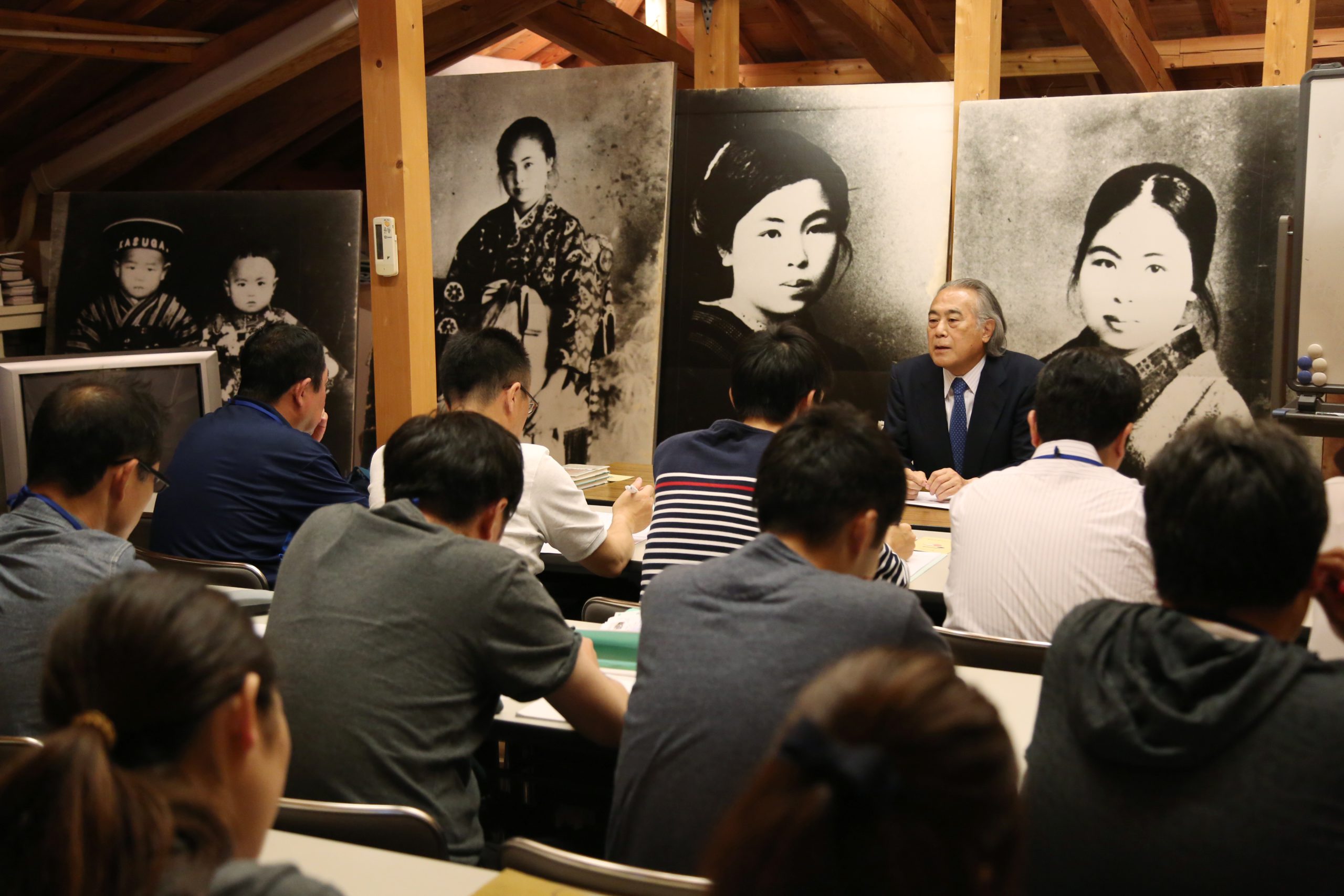- >
- Nanavi News
- >
- Report on the second day of the Nagato Tourism Concierge Training Course
Report on the second day of the Nagato Tourism Concierge Training Course
-
Last updated:
Jun 30, 2019
-
About the writer:
Nagato Tourism Convention Association

Thinking back to the history of Dori
The second session of the "Nagato Tourism Concierge Training Course" was held on Saturday, June 29.
This course consists of two parts: a "Basic Course" to acquire knowledge of Nagato City and a "Hospitality Course" to enhance your hospitality skills. This course is designed to improve your ability to welcome tourists with concierge-like hospitality. The Basic Course is scheduled from June to August, with lectures and hands-on experiences over a total of four days.
This second day of the tour will start from the Tong area on the eastern tip of Qinghai Island. The Tong area once prospered from old-fashioned whaling, and the Whale Museum, with its whaling tools and photos of fishermen, is the venue for this tour.


Here, the museum's director, Yoshikatsu Hayakawa, told us about whaling in those days, as well as about the "whale graves" where whale fetuses were buried and the "Whale Turning" ceremony that has continued for more than 300 years.



At the end of the performance, Director Hayakawa sang "Shukue Meideido," one of the "Tsugaruji Uta," a labor song and celebration song passed down in the region. The song is sung not with clapping hands but with rubbing hands to express mourning and gratitude for whales. The participants applauded loudly for this song, which they cannot usually hear.


Next, the tour will walk through the district guided by Kohei Yamada, director of the Dori Community Center, stopping at various points, including "whale graves," and passing through alleys. He told us that because the area has been closely connected with whales for a long time, people naturally avoid walking around manholes with whales painted on them.



The ocean seen from between the houses is a sight unique to this area.
Director Yamada's lighthearted manner makes us excited, wondering what kind of scenery we will encounter next.



We arrived at a place called "Dan-machi" facing the sea to the east. At the masonry breakwater, nets used for whaling used to be hung out to dry. Visitors can see the history of the Dori area with their own eyes.


The Dori area is the birthplace of Shonosuke, the father of children's song poet Misuzu Kaneko. Misuzu often visited her father's family home, and it is said that the steps of Mukigan-ji Temple, where the "Whale Turning" is held, may be the "stone steps of the temple I ran up" mentioned in a line of Misuzu's poem "Katabami".


The morning tour of Dori ended with a visit to the Hayakawa Family Residence, a National Designated Cultural Property, which provides an insight into the life of fishermen in the late 18th century.


Misuzu's gaze takes root in Senzaki
In the afternoon, we went to the "Kaneko Misuzu Memorial Museum" on Senzaki Misuzu Street.


Director Setsuo Yazaki spoke about the gaze of Misuzu Kaneko and the climate of Senzaki. Director Yazaki said that Misuzu put into words the way of thinking of the people of Senzaki, a fishing town where fishermen live by supporting each other by putting their hands together at the Buddhist altar on the day of a good catch.

We are alive because others are alive, and we are alive because we are allowed to fish. It was a time for us to reaffirm the importance of things that are taken for granted, but which tend to be lost in the modern world.

The last part of the second day was a town walk in the Senzaki district. Led by Mr. Kazuo Kanaya, chairman of the Nagato Volunteer Guide Association, and Mr. Kazuma Sakamoto, we began our walk from the memorial hall, splitting into two routes, one north and one south.

While introducing the stages of Misuzu's poems scattered along Misuzu Street and "Henshoji Temple" where Misuzu's grave is located, Chairman Kanaya led the tour to the northern end of Senzaki, where the monument of "Seto no Ame" is located.



We also visited "Bentenjima," one of the eight scenic spots in Senzaki, and the landing site where repatriates landed after the war.

Mr. Sakamoto first went to Yasaka Shrine, also known as Gion Shrine.
We also went to Senzaki Station and visited the gallery that opened this year on the premises.


Panels and photographs that provide information on the history of the salvage, as well as a copy of lyrics written by Akira Otsu, a lyricist from Senzaki, and his favorite audio equipment are on display here. This is a place where visitors can reflect on the two achievements that have been passed down through the generations in this area.


Just before 3:00 p.m., the San-in sightseeing train "XX no hanashi", which is limited to Saturdays, Sundays, and holidays, entered the platform.
The participants waved to each other and enjoyed a tour of the train during the 30-minute stop, which was not part of the original plan.


Even though they are the same fishing town, the Dori and Senzaki districts have different histories. Even so, I feel that they share many of the same gentle gazes depicted in Misuzu Kaneko's poem.
The second day of the course was a different approach to local history than the previous one. The next lecture will include more "hands-on" experiences. Nanavi" will report on the lectures throughout the series.


